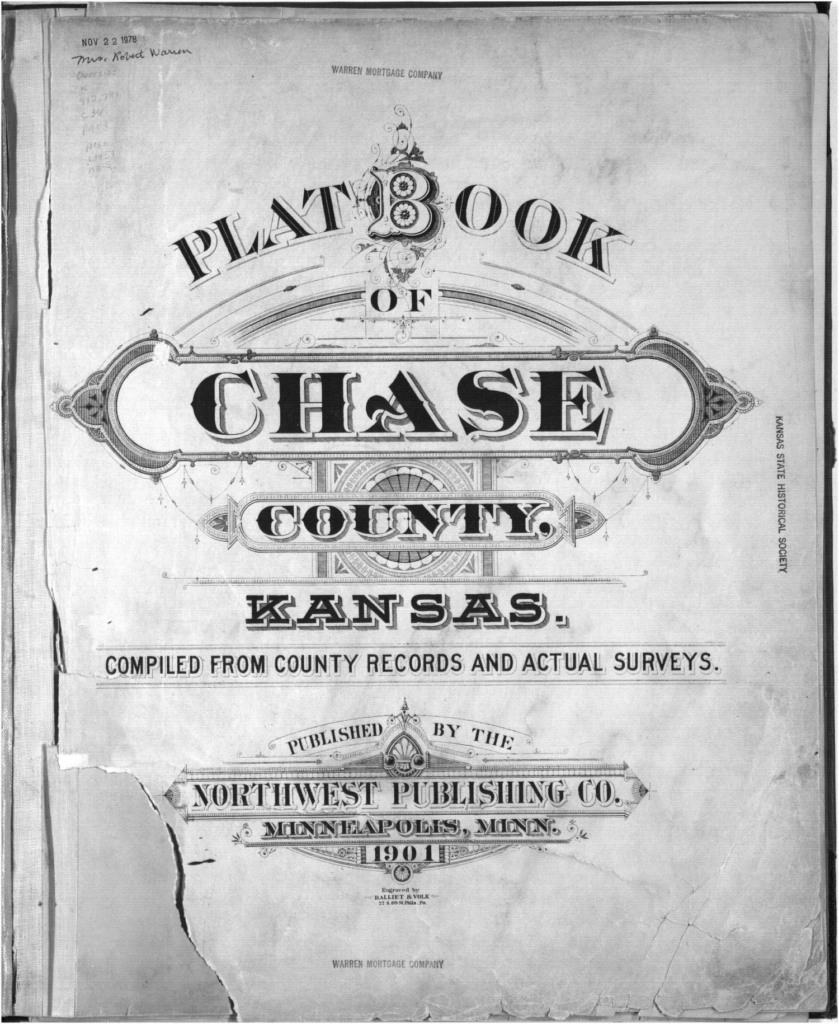In 1862, the Homestead Act was passed which allowed a certain amount of land to be owned by settlers to cultivate and farm. This pushed an increasing amount of settlers to move out west and establish their claim in the vast lands of the west and Midwestern United States. One of the counties where immigrants and settlers flocked to was Chase County Kansas.

The 1901 map of Chase County Kansas is typical for a map of a “frontier” town. Its a simple design that contains landmarks and other sites that would be important to settlers. Some of these landmarks are churches, school houses, county stores, and the path the railroad would take. Perhaps the most interesting feature on the map is the appearance of valuable farm land on the map and land that is already owned.

The size of the available farm land is what initially drew settlers to the plains of Kansas/”flint hills.” Before the flint hills was found to be too rocky and the soil was found to contain too much flint. The area of Chase County was an attractive place to settle for new immigrants coming into the Kansas territory. This is in large part thanks to the railroad which brought business, settlers, and supplies to the county and community. However, the designation of owned property and property lines would “possibly” give a way for the county to determine the annual census. And to decrease the chance for property disputes to occur.
Which brings me to my conclusion on the “Chase County Map.” I believe that the map was made to serve as a guide to new settlers/visitors. One, the map contains landmarks and where they are located within Chase County. Giving new people a reference of what is located in Chase county and the path that the railroad takes through town. Also, the markings of available farmland in Chase County shows new settlers what land is available for cultivation. And what land can legally be purchased by the new settlers moving into Chase County. The designation of purchased/owned land prevents new settlers from clamming land that is already owned. Thus, preventing property disputes or lawsuits taking place for control of the land.


Harrison, there’s a lot I like about this first blog. Its clear, well written, and combines (admittedly minimal) attention to cartographic detail with a more robust discursive analysis. What it lacks is any connection to the other map. You’ve drawn on one, instead of three sources. Every week, you should put these sources into conversation with one another.
This week is intro, but future weeks will need to adhere to these expectations.
Also, don’t forget to categorize your posts.